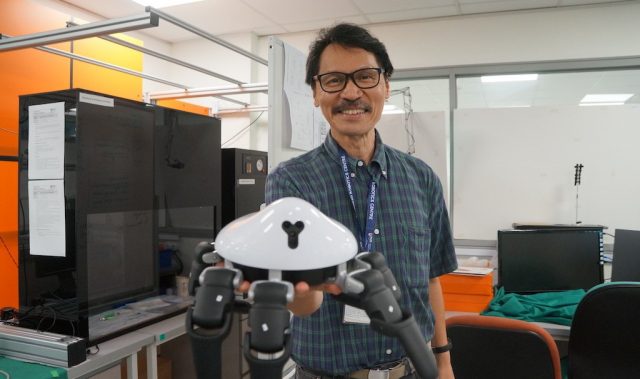
AsianScientist (Aug. 13, 2019) – Robots and prosthetic devices may soon have a sense of touch equivalent to or better than human skin thanks to Asynchronous Coded Electronic Skin (ACES), an artificial nervous system developed by a team of researchers at the National University of Singapore (NUS). Their findings have been published in Science Robotics.
“Humans use our sense of touch to accomplish almost every daily task, such as picking up a cup of coffee or making a handshake. Without it, we will even lose our sense of balance when walking. Similarly, robots need to have a sense of touch in order to interact better with humans, but robots today still cannot feel objects very well,” said study leader Assistant Professor Benjamin Tee.
ACES can detect touches more than 1,000 times faster than the human sensory nervous system. For example, it is capable of differentiating physical contacts between different sensors in less than 60 nanoseconds even with a large numbers of sensors. ACES-enabled skin can also accurately identify the shape, texture and hardness of objects within 10 milliseconds, ten times faster than the blinking of an eye. This is enabled by the high fidelity and capture speed of the ACES system.
While the ACES electronic nervous system detects signals like the human sensor nervous system, it is made up of a network of sensors connected via a single electrical conductor, unlike the nerve bundles in the human skin. It is also unlike existing electronic skins which have interlinked wiring systems that can make them sensitive to damage and difficult to scale up. This design allows ACES-enabled electronic skins to continue functioning as long as there is one connection between the sensor and the conductor, making them less vulnerable to damage.
“ACES can be easily paired with any kind of sensor skin layers, for example, those designed to sense temperatures and humidity, to create high performance ACES-enabled electronic skin with an exceptional sense of touch that can be used for a wide range of purposes,” Tee said.
For instance, pairing ACES with a transparent, self-healing and water-resistant sensor skin layer recently developed by Tee’s team creates an electronic skin that can self-repair, like the human skin. This type of electronic skin can be used to develop touch-sensitive prosthetic limbs.
Other potential applications include developing more intelligent robots that can perform disaster recovery tasks or take over mundane operations such as packing of items in warehouses. The NUS team is therefore looking to further apply the ACES platform on advanced robots and prosthetic devices in the next phase of their research.
The article can be found at: Lee et al. (2019) A Neuro-inspired Artificial Peripheral Nervous System for Scalable Electronic Skins.
———
Source: National University of Singapore.
Disclaimer: This article does not necessarily reflect the views of AsianScientist or its staff.












